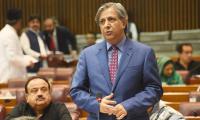With an urban population growing three percent per year, Pakistanis are flocking to cities faster than any other country in South Asia. By 2030, more than half of Pakistan’s projected 250 million citizens are expected to live in cities. The main drivers of Pakistan’s urban growth are high birth rates and migration from rural areas. Migrants are attracted to cities because of better job opportunities and improved access to basic services. However, urbanisation has inflated Pakistan’s biggest cities so rapidly that they struggle to deliver public services and create productive jobs. Urban poverty is on the rise, with one in eight urban dwellers living below the poverty line. As a result, Pakistan’s cities contribute much less to the economy compared to other developing countries. Pakistani cities – inhabited by 38 percent of the population – make up around 55 percent of the total GDP.
Without better urban planning to accommodate rapid growth, cities have the potential to become hotbeds of discontent and unrest instead of being engines of growth and innovation.
Mumraiz Khan
Karachi
The contrasting economic trajectories of India and Pakistan have been a subject of interest for economists and...
As a lifelong resident of Karachi, I am intimately familiar with the challenges and frustrations posed by its...
The situation in the ‘katcha’ or formally undeveloped areas of Sindh is getting worse by the day due to the...
This letter refers to the news story ‘PM’s return by regular PIA flight troubles passengers’ . While PIA is...
Pakistan experienced severe floods due to abnormal rainfall this month. The disaster has, thus far, resulted in the...
I find the sporadic, random disruptions to social media access in Pakistan to be deeply troubling. The future of the...







